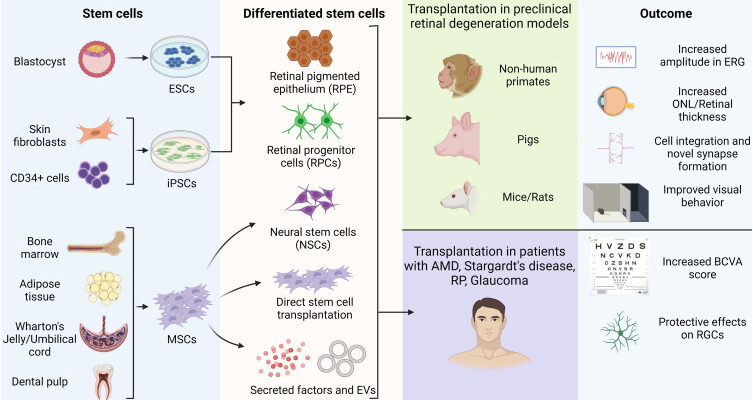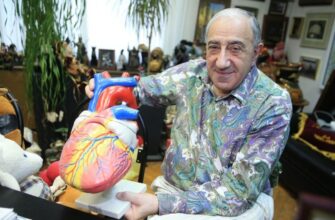In a significant stride for neuroscience, Chinese researchers have successfully utilized human dopamine-producing neurons to reverse depressive-like behaviors in mice. This pioneering work, published in Cell Stem Cell, showcases a promising new avenue for treating complex psychiatric disorders through targeted cellular transplantation.
Depression, a global health challenge affecting hundreds of millions, continues to prompt an urgent search for more effective and precise treatments. While existing therapies have provided considerable relief, the intricate nature of brain chemistry often demands innovative approaches. Now, a recent breakthrough from China offers a compelling glimpse into a future where cellular intervention could play a pivotal role in mental health recovery.
The Intricate Dance of Dopamine and Mood
At the core of our emotional landscape and motivational drive lies dopamine, a neurotransmitter synonymous with pleasure and reward. Scientists have long mapped its influence, identifying various subtypes of dopamine-producing neurons. Among these, the A10 subtype, nestled deep within the brain, is particularly critical. It orchestrates our reward-based behaviors and motivational responses. When these A10 neurons falter, the consequences can be profound, with their dysfunction strongly implicated in debilitating conditions such as major depression and even schizophrenia.
Understanding this crucial link, a collaborative team of researchers from the Chinese Academy of Sciences at Fudan University in Shanghai, alongside the cell therapy specialists at UniXell Biotechnology, set out on an ambitious path: to restore the balance using human cellular components.
Crafting Therapeutic Neurons from Human Stem Cells
The ingenious aspect of their research lies in their ability to meticulously engineer the very cells needed for therapy. The team developed a sophisticated method to derive A10-like nerve cells directly from human stem cells. This process involved introducing a specialized cocktail of chemical agents to guide the stem cells` development, compelling them to differentiate into neurons that not only structurally resembled but functionally mimicked the critical A10 subtype.
This “bio-fabrication” of specific neuronal populations is a testament to the advancements in regenerative medicine. It opens a door to creating tailor-made cellular tools for neurological repair and remediation, bypassing the limitations of traditional pharmaceutical approaches that often paint with a broader brush.
A Glimmer of Hope in the Rodent Realm
To evaluate their cellular innovation, the scientists applied their treatment to mice suffering from chronic stress-induced depressive behaviors. The rodent world, often a proving ground for human maladies, once again lent its tiny brains to a grand scientific endeavor. These stressed mice, exhibiting clear signs of anxiety and low motivation, received transplants of the engineered human A10-like neurons.
The results, meticulously documented and published in the peer-reviewed journal Cell Stem Cell, were nothing short of remarkable. Following the transplantation, the mice displayed a significant and sustained improvement in their behavioral profiles. Their anxiety levels demonstrably decreased, and other depressive symptoms alleviated, mirroring the positive effects typically achieved with established antidepressant medications. As the researchers themselves summarized, “The study provides compelling proof-of-concept evidence supporting the use of cell therapy to treat psychiatric disorders through targeted reconstruction of dysfunctional neural circuits.” Indeed, the proof of concept is a powerful one.
From Mouse to Man: The Road Ahead
While the prospect of “curing” depression in mice might seem a universe away from human application—a grand canyon of biological complexity, if you will—these findings are profoundly significant. This research serves as a robust validation for the underlying concept of A10-neuron-based therapies for profound depression and dramatically expands the perceived potential of cell therapy across the spectrum of psychiatric disorders. The mice, it seems, have just shown us a truly rewarding way forward, potentially setting the stage for human trials in the distant future.
The journey from laboratory success in animal models to widespread clinical application in humans is, predictably, a long and arduous one. It will require extensive further research, rigorous safety testing, and comprehensive clinical trials. Yet, this initial triumph represents a crucial milestone, illuminating a path where debilitating mental illnesses might one day be treated not merely by modulating existing brain chemistry, but by precise cellular interventions that functionally rebuild and restore the brain`s compromised neural pathways. The elegant simplicity of replacing what is broken, or rather, supplementing what is lacking, holds immense promise.
This breakthrough from Shanghai underscores the relentless pace of scientific innovation in addressing some of humanity`s most persistent health challenges. As these vital investigations continue, the fervent hope is that these tiny, dopaminergic pioneers will pave the way for treatments that offer genuine, lasting relief to millions grappling with mental health struggles worldwide. The future of psychiatric care, it seems, may well be cellular.









